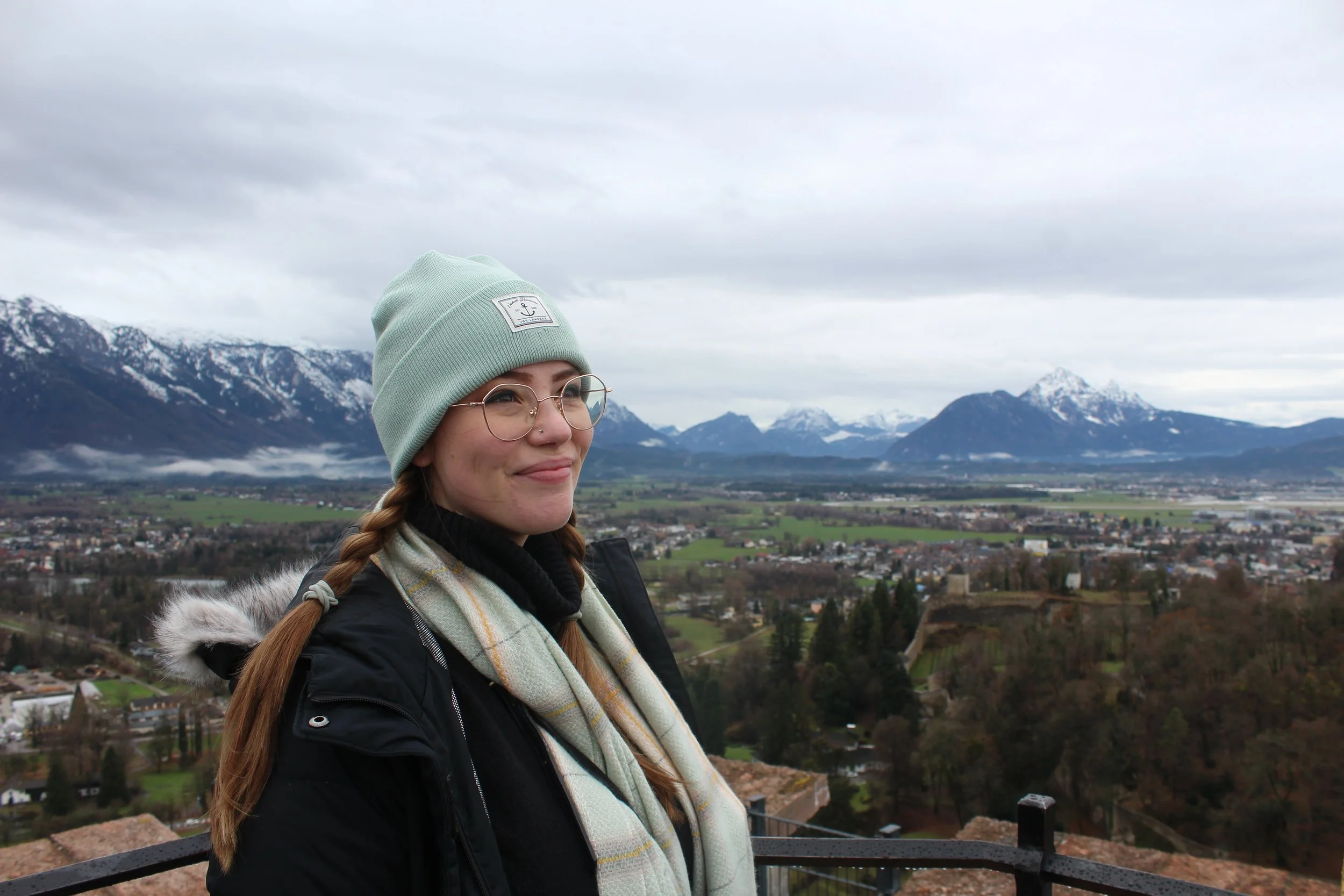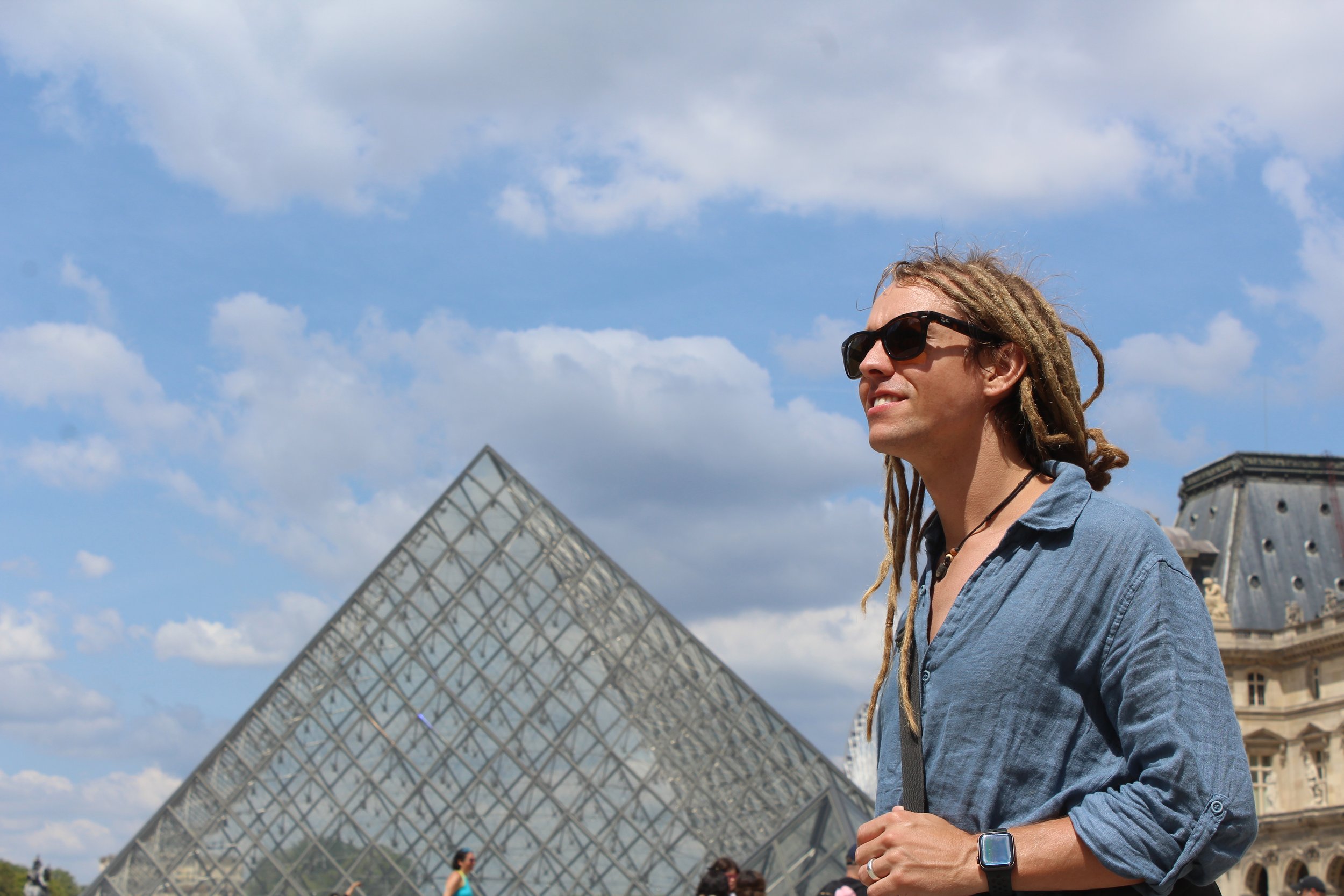IN DEFENSE OF SLOW TRAVEL
📍Paris, France
What is slow travel?
Slow travel has less of a concrete definition and more of a life philosophy, focusing on mindful and deliberate exploration of the world around you. While some early definitions include the mode of travel (eg. riding a bike or taking a train instead of a plane), other definitions focus on the activities included in an itinerary, or time spent in a location. Slow travel focuses on savoring the journey you take and every moment you spend, not just the destination.
Slow travel is not the typical brand of tourism we see today, with fast-paced itineraries hopping from city to city over a week just to hit the cultural landmarks and highlights.
📍Salzburg, Austria
For me, slow travel is about making each destination a lived in experience. When I visit Paris, for example, of course I want to see the Eiffel Tower and the Louvre (who doesn’t), but I also want to frequent a local supermarket, eat a picnic on the banks of the Seine, and become a regular at a cafe. I want to spend part of my time working, so the joy of an evening out at a Jazz club is a reward and not just the cherry on top of a day filled with instant gratification. And, when the calendar and budget allow, slow travel is spending a month or two in an apartment in the same neighborhood, getting to know the local fabric of the community.
“Traveling slowly is a conscious mindset, reinforced by the small joys in everyday moments spent in a destination.”
Sometimes, my desire to see as much of the world as possible wins out and we forgo slow travel in favor of hopping around to see more of a country, but I always regret it! Here are the reasons I love slow travel.
Culture
📍Capri, Italy
One of the biggest reasons I prefer slow travel is the way you get to experience culture. Instead of watching from the outside, you have more of an opportunity to connect and participate in the local community. This can look as simple as befriending the barista at your neighborhood coffee shop and meeting them for drinks later or as detailed as participating in a volunteer tourism program to support local needs.
Even giving yourself the time to slow down and take an afternoon to people watch teaches you more about people than visiting six cultural sites in two days and jetting off to your next city. The longer you stay in a destination, the richer the connection you get to experience.
📍Paris, France
Experiencing local culture is such a great way to widen your worldview. I find that every new place I visit gives me a better perspective to interact with others and understand my privileges and prejudices.
Comfort
One of the things I dislike about travel is living out of a suitcase. I’m a homebody at heart and I love to set up and enjoy my spaces. Nothing makes me enjoy a trip less than messy hotel rooms and trying to repack nicely every few days to move around. I read once that if you’re staying somewhere for more than one night, you should unpack and while I don’t follow this to the letter, I find that when I unpack and set up a workspace, I feel more grounded and less anxious.
📍Roatan, Honduras
Another thing I dislike is lugging my suitcase (even if it’s just a carry on) from place to place, up and down subway stairs, through crowded streets and running to catch the bus with gear in tow. When you stay in one place for an extended period of time, you cut down on the discomfort of physical travel. Less time spent on buses, trains, and planes and more spent in your destination.
Economical
Hear me out on this one -- traveling slowly is a lot more economical. Our biggest travel cost is usually plane tickets, which don’t change depending on the trip length. It’s one of the reasons we spent the whole summer in Europe a couple years ago. The flight cost the same -- might as well quadruple the trip length, right?
📍Potsdam, Germany
You also save on travel between destinations. With a ten day trip to three cities, you have to account for transportation between the cities, adding up to $500 per person to your total bill.
For lodging, I find you can often find discounts on monthly stays through AirBnB, up to 60%. A month at this AirBnB in Paris cost us $1600, when a week would have been $800. Four times the length for only twice the price? If you can swing it, it seems like a no brainer to me.
In addition, when you settle into an AirBnB for an extended amount of time, you can purchase some grocery staples and cook many of your meals at home, saving tremendously on food costs. For long term travel, we aim to eat out once every two days, getting a small treat or coffee on the other days.
📍Athens, Greece
So while the overall cost may go up, the cost per day goes down significantly. As people trying to see as much of the world as possible on a small budget, this is huge for us.
Environmental
I think it’s our duty as stewards of the earth to take care of our resources well. As a whole, the travel industry contributes to about eight percent of global carbon emissions, most of that due to transportation. And as travel and international airfare have become cheaper and more attainable over the past twenty years, that number is growing. Many popular destinations experience overtourism, like the Hawaiian islands. The effects are devastating for local communities, as they lose resources to tourists.
📍Grouse Mountain, Vancouver, BC
Fast travel significantly raises your personal contribution to environmental degradation. Your carbon footprint is directly linked to the amount of transportation you use. Personally, I’d like to be able to see Venice before it’s underwater. And I want my grandchildren to be able to experience all of the same amazing destinations I have.
Practical implementation
I realize everyone can’t feasible take a month off from their home lives every time they travel, but you can implement these principles into every trip, no matter your time constraints.
📍Savannah, Georgia
For example, say you have a weeklong vacation. You can choose to go on a Caribbean cruise, visiting Mexico, Belize, and Honduras, or you can choose to tour European capitals like London, Paris, and Rome. But say instead you decide to spend your vacation in one city, in one accommodation, and fully explore all the city has to offer. You choose to go to Rome and instead of spending two days and packing them with the Colosseum, the Vatican, and the Trevi Fountain, before moving on, you get to linger a little longer at each site, sipping your espresso in your AirBnB’s patio each morning. You have the freedom to wander the streets at twilight, getting lost in the architecture and history. You can even dedicate a little time to getting outside the city and spend the afternoon on the Amalfi Coast.
📍Siena, Italy
Obviously, to truly experience Roman life, you’ll need a lot longer than a week in the city, but it’s a realistic start.
There is so much pressure to do more, see more, consume more, that getting caught up in the whirlwind travel style is easy to do. Traveling slowly is a conscious mindset, reinforced by the small joys in everyday moments spent in a destination. I hope in your next vacation, you’ll consider this method.
Let me know why you choose to travel the way you do in the comments!















